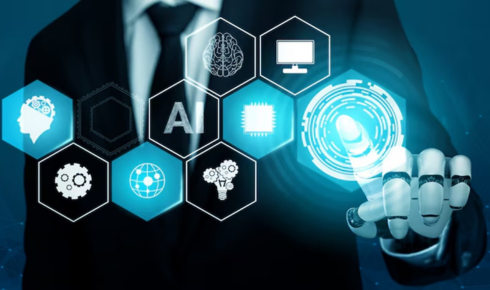Industrial safety has entered a new era. No longer is it enough to rely on periodic inspections or post-incident reports. The future of workplace protection hinges on visibility—the kind that happens in real time, across all operations, with immediate response capabilities. Safety leaders across manufacturing, logistics, and energy sectors are now investing in systems that can track risks as they unfold, not after the fact.
Traditional safety programs were designed for slower, simpler environments. But today’s operations are high-speed, high-risk, and heavily scrutinised. Delayed responses, fragmented data, and manual inspections no longer suffice. As regulations tighten and operational costs rise, safety leaders are embracing real-time monitoring as a core pillar of risk prevention, not just compliance.
The Problem with Lagging Indicators
Lagging indicators—such as incident reports, lost workdays, and compensation claims – only tell part of the story. They highlight problems after harm has occurred. While useful for audits and insurance, they offer little to prevent the next incident from happening.
Leading safety professionals are shifting focus to leading indicators: early warning signs, unsafe behaviours, or near-misses. But to capture these, organisations must observe the workplace continuously. This is where real-time monitoring, especially through AI-powered video analytics, is changing the game.
What Real-Time Monitoring Delivers
Modern safety platforms use computer vision and AI to analyse footage from existing CCTV infrastructure. They detect PPE violations, unauthorised access, equipment misuse, and behavioural risks the moment they occur. Alerts are issued instantly, allowing intervention before harm is done.
This shift transforms safety teams from reactive responders to proactive risk managers. It also creates a continuous feedback loop, where safety performance can be reviewed daily, not just during quarterly audits or after a serious injury.
According to Protex AI’s Safety Computer Vision Market Report, this change is accelerating across industries, with 53% of firms plan to increase their AI budgets by at least 10% in 2025, with many companies citing workplace safety as a primary use case for investment.
Improving Response Time and Accountability
One of the most critical advantages of real-time monitoring is faster hazard response. When a forklift enters a restricted zone or a worker fails to wear safety gear, waiting until the next shift to respond could be too late. Real-time alerts empower supervisors to act immediately, correcting behaviour, isolating equipment, or evacuating areas as needed.
This immediacy also strengthens accountability. Events are captured with time stamps, video footage, and metadata—removing ambiguity from incident investigations. Safety teams gain concrete evidence to support disciplinary action, training needs, or infrastructure changes.
Training and Behavioural Change
Another underappreciated benefit of real-time safety data is its use in training. Footage of unsafe acts—captured in context, not simulated—can be a powerful teaching tool. It shows workers what risk looks like on the ground, in their environment, involving their peers.
This visibility turns abstract rules into practical awareness. Safety teams can identify patterns, isolate common violations, and tailor training accordingly. Workers also become more conscious of their actions, knowing that safety oversight is active, not occasional.
Building Trust Through Transparency
Some may worry that real-time surveillance erodes worker trust. In practice, the opposite is true—when used correctly. Safety leaders who communicate clearly about the purpose of monitoring, and use it to protect rather than punish, often see higher employee engagement.
Workers appreciate environments where risks are addressed swiftly and fairly. They feel safer when near-misses are treated seriously and when interventions happen before accidents. Over time, this fosters a proactive safety culture rooted in mutual responsibility and shared goals.
Scalability and Cross-Site Consistency
For organisations with multiple facilities, real-time safety monitoring offers consistency. Instead of relying on different supervisors or local systems, AI-powered platforms enforce the same standards across sites. They generate comparable data, allowing head office to benchmark performance and identify high-risk locations.
This scalability is essential for regional or global operations. It ensures that safety isn’t just a local concern, but a centralised, data-driven discipline managed strategically across the business.
Reducing Costs Through Early Intervention
Preventing an incident is always cheaper than responding to one. Early detection avoids equipment damage, injury claims, legal exposure, and lost productivity. Companies using real-time monitoring report measurable financial returns.
As reported in the same Protex market study, 25% fewer lost workdays were observed by companies that implemented real-time AI-based hazard detection systems—resulting in both safety gains and productivity boosts.
Preparing for Regulatory Scrutiny
Governments and regulatory bodies are adopting more data-driven approaches to workplace safety. They expect detailed records, real-time reporting, and proof of corrective action. Companies still relying on manual logs or sporadic checks may find themselves unable to comply with emerging standards.
Real-time systems provide audit-ready documentation. They generate logs automatically, record incident footage, and track remediation actions. This transparency helps organisations demonstrate good faith, avoid penalties, and build trust with regulators and insurers.
The Strategic Shift Ahead
Real-time monitoring is more than a tech upgrade—it’s a strategic shift. It signals that safety is not a side task delegated to floor managers, but a data-driven priority embedded in operations. It reflects an organisation’s commitment to prevention, accountability, and innovation.
Safety leaders who invest in these capabilities aren’t just reducing accidents—they’re transforming how risk is understood, measured, and managed at every level.
The path forward is clear: visibility saves lives, and time is the most valuable variable in risk reduction. The companies leading on real-time monitoring will also lead in safety performance, regulatory confidence, and operational resilience.
Creating Organisational Alignment Around Safety
Real-time safety monitoring also enables better alignment between operations, safety teams, and executive leadership. When everyone has access to the same live data, it creates a shared language around risk. Safety professionals can make evidence-based recommendations, while managers understand the operational implications in real time.
This cross-functional alignment ensures that safety is not treated as an afterthought or a compliance hurdle, but as a core enabler of operational continuity and workforce morale. It also supports long-term planning, helping organisations allocate resources to high-risk areas before incidents force reactive action.
When executives see leading indicators improve—fewer near misses, faster interventions, lower PPE violations—they gain confidence in the safety strategy. This makes it easier to secure ongoing investment in tools, training, and innovation, creating a virtuous cycle of improvement and engagement.







